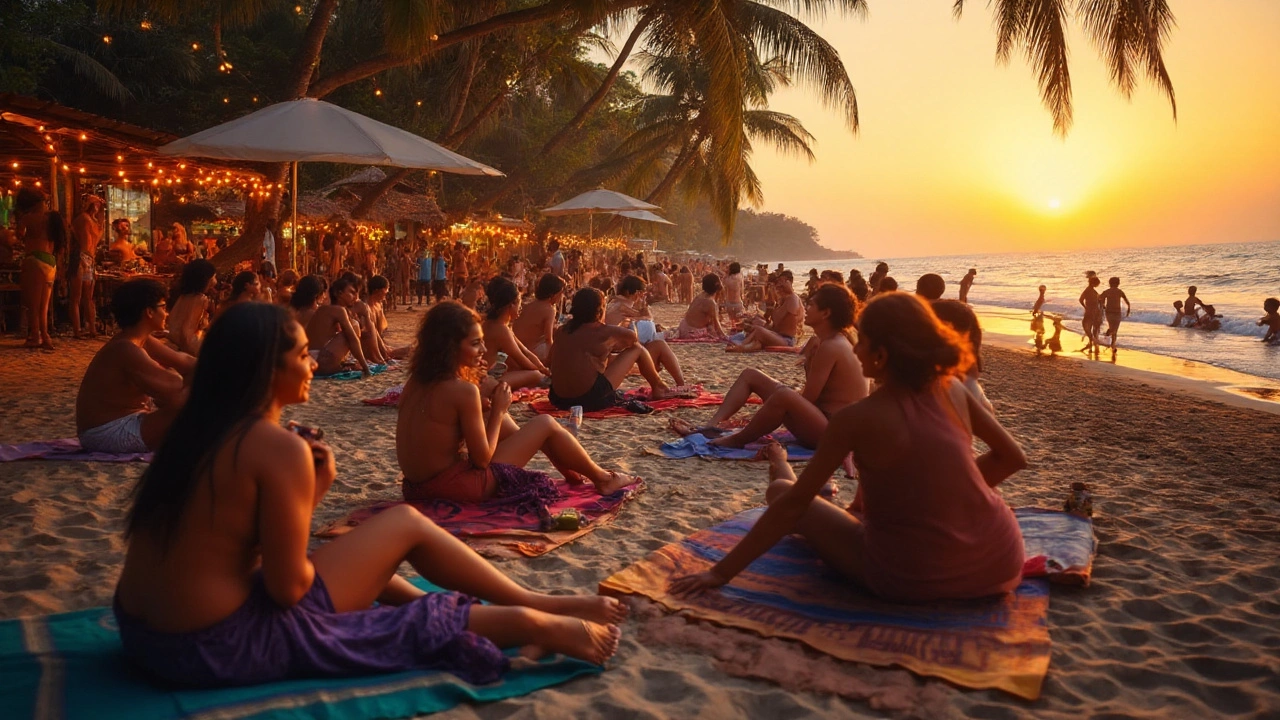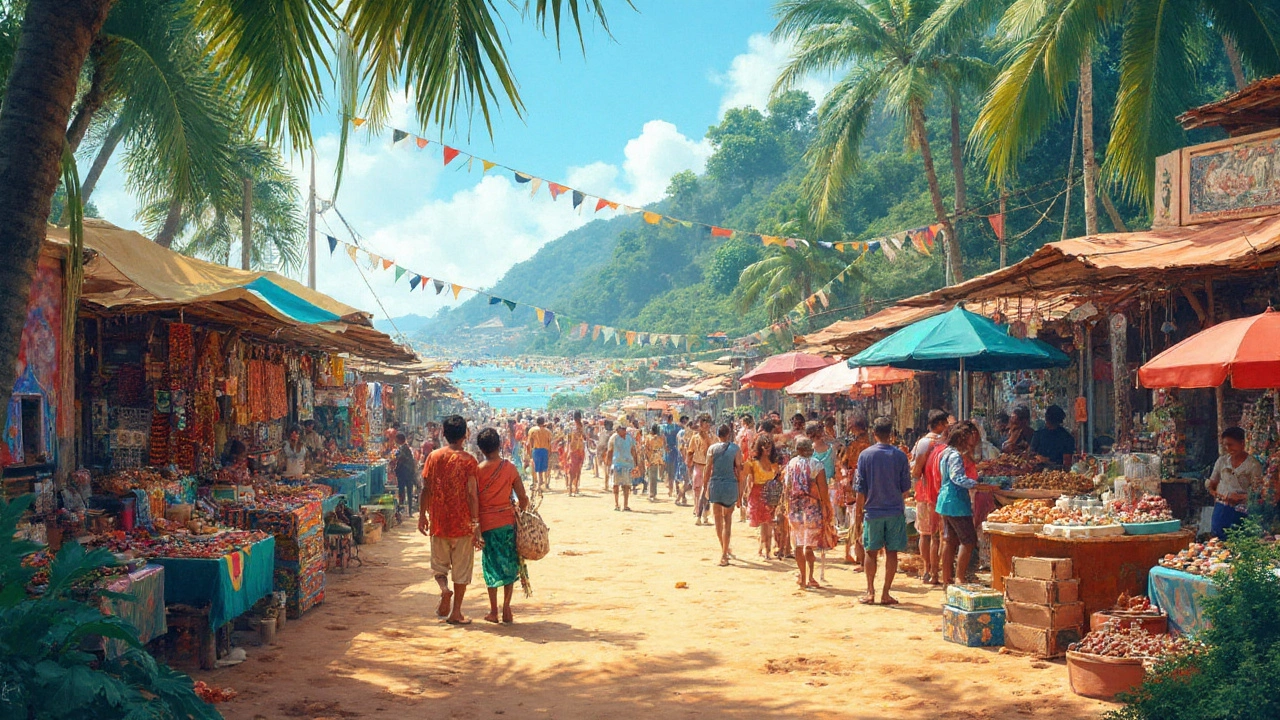Foreigner’s Beach in Goa: Why Anjuna Beach Steals the Spotlight

Some places don’t just exist—they buzz. Anjuna Beach in Goa is one of those spots that manages somehow to keep itself wild and free, no matter how many flip-flops and backpacks hit its shorelines. When people talk about the so-called “foreigner’s beach” in Goa, they’re almost always talking about Anjuna. There’s a wild story in every shack, a tangle of travelers in every sunset rave, and you’re just as likely to find yourself trading stories with a Swede who’s been coming here for twenty years as with a first-timer who just wandered in from the night train. It feels like everyone has a secret to tell or a tip to pass along. But why here? Why Anjuna, out of all of Goa? Let’s pull up a shady seat and really get into what makes this place tick.
Why Anjuna Earned the Name “Foreigner’s Beach”
What’s special about Anjuna isn’t just the sandy stretch or how the Arabian Sea comes at you with wild, blue-green energy. It’s the vibe—open, odd, rebellious at the edges, and welcoming in a way that defies explanation. Back in the 1960s and 70s, this was the first stop for the original hippie trail. People from Europe, Australia, Israel, Russia, and way beyond rolled in, drawn by rumors of freedom and heady beach parties tucked behind coconut palms. If you flip through any old travel journal—maybe one scrawled over beers at Curlies—you’ll see that Anjuna earned its “foreigner’s beach” title because people from all over the world kept coming back. Some never left.
Here’s the fun part: even after Instagram and fast Wi-Fi hit everywhere, Anjuna still keeps a raw energy. The weekly Anjuna Flea Market, started by those first visitors as a way to swap trinkets and tales, has grown into a sprawling, noisy, colorful mess where you find Turkish towels, handmade silver jewelry, joss sticks, pashmina scarves, and a hundred curious objects you never even knew you wanted. On a Wednesday in high season, you can hear at least six languages in a five-minute stroll. That’s not hype—it’s just the usual tempo.
If you’re thinking, “Come on, aren’t there a dozen beaches where foreigners chill in Goa?”—sure, you’d be right. Arambol has a kind of mellow, yoga scene; Palolem leans toward dreamy sunsets and cozy huts. But Anjuna endures as the root, where international flavor sits closest to the surface. Even locals from Panaji to Mapusa call it the “foreigner’s beach”—not with any disdain, but usually with a half-grin and a story of some beach legend or festival night.
But here’s a lesser-known fact: the term isn’t just about constant parties (though there’s no denying Anjuna’s insane nightlife, with trance, techno, rock, and reggae dropping all week). It’s also a nod to the way every culture mixes freely, from the early Greek Orthodox Christmas parties to the Israeli cafes popping up after the 2000s. For a while, you could spot the national moods as easily as flags—brazenness from the Russians, dreamy introspection from the Scandinavians, wild bargaining from the Israelis. My spouse, Adelaide, loves how you might buy a secondhand English novel in the market one day, and sip Turkish apple tea the next, all without anyone batting an eye. If you’re eager to meet people living way outside the nine-to-five, Anjuna’s where you go.

Beyond the Sand: Famous Faces, Markets, and the Wild Heart of Anjuna
It’s the small details that make Anjuna unforgettable. Take the old German Bakery—not just a spot for the best cinnamon rolls, but an unofficial international embassy. Or Shiva Valley and its impossible-to-repeat Thursday night parties; people say anyone who mattered in the Goa trance scene at least once lost a shoe here. The vibe is open to all, but you’ll still catch the old hands giving the knowing nod—a mix of backpackers, digital nomads, and lifers who arrived in the ‘80s and are still lounging in tie-dye and flip-flops.
The Flea Market deserves its own legend. What began as a swap among broke Western travelers looking to fund the next week’s food and fun has become a global bazaar. There’s something oddly comforting about the way seasoned sellers greet returning faces—"Oh! You’re back again! How was Berlin?"—as if Anjuna were a home port and not just a stop on the ride. If bargaining isn’t your thing, bring a friend who’s savvy, or just enjoy the spectacle: a swirl of live music, tattoo stands buzzing, dreadlocked French artists selling palm-leaf paintings, and even the occasional local passing through because she loves the hustle and weirdness of it all.
Not all of Anjuna sparkles with party lights. Some corners are unexpectedly serene. Try a sunrise yoga class near the rocky headland, or slip behind the market to quiet guesthouses where travelers who “came for a week, stayed for a decade” rent out faded rooms filled with old Goa stories. Want to see just how long the international flavor has lasted? You’ll find a Greek taverna tucked away not far from a German hostel, and popup sushi stalls that only open once a week in high season.
Of course, if you’re here for the legendary nightlife, Anjuna shows up. Curlies and Shiva Valley dominate with their neon-lit dance floors right on the edge of a dark sea. If you want to get a sense of just how many foreigners roll through, pick a party at random and see how many different accents you encounter between the first drink and the last track. DJs usually come from Berlin, Tel Aviv, Amsterdam—names you can brag about to your friends back home. Even the bartenders might’ve just finished a teaching stint in Athens.
But Anjuna isn’t about cliques or velvet ropes. Part of its storied reputation comes from that weird, magical Goa honesty—everyone's at ease, not taking themselves too seriously. You could be a backpacker who just arrived or a Mumbai expat who treasures the place for those “international summer nights.” No one cares if your flip-flops are branded or if your tattoos are real. That open spirit is why the “foreigner’s beach” label stuck.

Real Talk: Tips for Making the Most of Anjuna Beach
First, bring an open mind. The mix is everything here—people, food, music, even the sunsets change every night depending on who’s jamming at the beach hut. If you want the most out of Anjuna, let that swirl wash over you. Skip the expectations and just wander. Want to eat? Try the Israeli shakshuka, the German brown bread, or the odd fusion pizzas. You’ll be surprised how the food mirrors the crowd—international, experimental, and comfort-driven.
Next, don’t arrive expecting heavy tourist infrastructure. That’s part of the deal. The guesthouses range from barely-there bungalows with mosquito nets to upmarket resorts tucked behind palms. Real Anjuna is a little raw—wild dogs snoozing under benches, power flickers, the occasional all-night drum circle, mopeds darting down impossible roads. If you want a crisp, “luxury” experience, you’re better off heading farther south. But if you want stories to take home, this is your playground.
Safety-wise, Anjuna is like anywhere fun: keep your wits about you, lock up valuables, and be friendly but aware. Solo travelers, especially women, should stick to well-lit spots at night and, as in any busy party town, keep an eye on your drinks. That said, most travelers who make a little effort to blend in (pick up a few Goan phrases, respect the shoreline, buy a round for the table) find themselves slipping easily into this community of sun seekers and dreamers.
Want a piece of authentic Anjuna? Hit the small breakfast places first thing in the morning. The crowd is a mix of old travelers, local musicians, and yoga teachers sharing travel stories and local gossip over black coffee. Or walk north towards Vagator for a quiet escape—the beach thins out, the cliffs rise, and you get a sense of why people stayed here, at the edge of “regular” life. Surf conditions are random, so don’t expect big waves, but you can always join a volleyball game or try paddle boarding when the mood hits. Late afternoon is best for swimming—warmer, less crowded, but do keep an eye on the tide; the rocks aren’t always friendly after dark.
If you’re out hunting for souvenirs, skip the mass-produced trinkets and choose local crafts instead—Goan beadwork, handmade soaps, classic tie-dye shirts (do a sniff test to avoid cheap dyes—it’s a thing). For music, record shops pop up in the rainy months, sometimes operated by dreadlocked Europeans playing old trance vinyls. And if you’re the bartering kind, have fun with it—use humor, flash a grin, maybe swap stories; you’ll get better prices and better memories.
One last tip: don’t just stick to Anjuna. Use it as your base. Check out the neighboring beaches—Vagator for sunsets, Baga for the market madness, Morjim for a Russian flavor, and Mandrem for quiet yoga mornings. Each has its own way of building a little piece of “foreigner’s Goa,” but all roads circle back to Anjuna in the end, where everything started and where every party finds its final afterglow.
The “foreigner’s beach” in Goa isn’t just a nickname. It’s an ongoing, tangled, sun-soaked love affair between travelers and a place that just refuses to settle down. If you want to see what the legend looks like up close, if you’re there for stories more than souvenir snapshots, make Anjuna Beach your first stop. You never really know who you’ll sit next to, or how long you’ll stay. Maybe that’s why it still counts as the global heartbeat of Goa—and why people like me, and probably you, keep coming back.